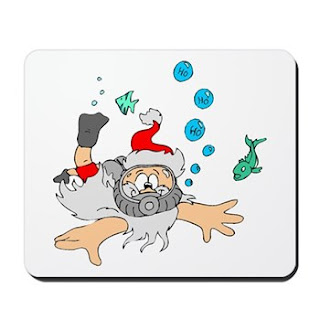 |
| Drake, Blake, Jennings and Nelson all attacked Tenerife |
On annual International Talk Like a Pirate Day (Sep 19), a Brit in Tenerife would do well to keep quiet, lest it be thought that they were a descendant of any of the many English pirates to have visited or attacked these shores.
During the 14th Century, pirates avoided Tenerife, since they heard hair-raising tales of the savagery of the inhabitants of the then, as yet, unconquered island, but almost as soon as the Spanish conquest was over, the island became a magnet for the many, mainly British, French and Dutch, pirates.
The Canary Islands, due to their geographical position, became a compulsory stopover for Spanish fleets on their way to and from the New World and because of their strategic location along these trade routes, Tenerife and its fellow Canary Islands, therefore, became sitting ducks for pirate attacks and foreign invasions. Galleons, which came back loaded with treasures from the American Continent, were often attacked by pirates protected by English and French crowns.
Sir Francis Drake attacked Tenerife in 1586 and Gran Canaria in 1595.
 |
| Robert Blake's flagship George at the battle of Santa Cruz de Tenerife in 1657 Image Charles Dixon [Public domain], via Wikimedia Commons |
Sir Francis Drake attacked Tenerife in 1586 and Gran Canaria in 1595.
In 1656/7 Robert Blake, the English pirate, tried to conquer Tenerife and annex it to the English kingdom. On April 20 that year, Blake totally destroyed a Spanish silver fleet of 16 ships at Santa Cruz Bay, Tenerife.
In 1706, Rear Admiral Sir John Jennings, with a fleet of 13 ships, tried to occupy Santa Cruz harbour, without success.
The most famous "pirate" to attack Tenerife was Horacio Nelson, whose failed attack on Santa Cruz on 25 July 1797 cost him his arm. Even British history claims that the admiral's intention was to destroy the ships, loaded with a large quantity of gold and silver, which were anchored in the port of Santa Cruz and would have bankrupted Spain. But if that's 'all' he wanted, why did he attempt a landing? Logic, therefore, sides with the Spanish version that believes he wanted to gain control of the island as a base for further activities.
The most famous "pirate" to attack Tenerife was Horacio Nelson, whose failed attack on Santa Cruz on 25 July 1797 cost him his arm. Even British history claims that the admiral's intention was to destroy the ships, loaded with a large quantity of gold and silver, which were anchored in the port of Santa Cruz and would have bankrupted Spain. But if that's 'all' he wanted, why did he attempt a landing? Logic, therefore, sides with the Spanish version that believes he wanted to gain control of the island as a base for further activities.
Of course, it depends which side you're on whether you call these pirates and privateers, or historical icons and national heroes, but it's a testament to how tough the local people are that none succeeded in invading or taking the island.
Now it's mostly legless, rather than armless, English invaders in Tenerife.
But the constant cross-ocean naval movements between Spain and its American colonies meant ships laden with treasures and spices. Pirate flotillas began patrolling the stretch of ocean between the Azores and Canary Islands in the 16th century, and would continue to do so into the 17th, 18th and even 19th centuries. In their down time, these pirates would head for the islands where they robbed, burned down villages and killed islanders in search of wine and riches. This constant threat led to a militarization of the island.
Watch towers and castles were constructed in hopes of fending off bad-intentioned seafarers, villages were built out of sight from the coastline and, today you can still explore castles, forts and towers in Tenerife.
Now it's mostly legless, rather than armless, English invaders in Tenerife.
But the constant cross-ocean naval movements between Spain and its American colonies meant ships laden with treasures and spices. Pirate flotillas began patrolling the stretch of ocean between the Azores and Canary Islands in the 16th century, and would continue to do so into the 17th, 18th and even 19th centuries. In their down time, these pirates would head for the islands where they robbed, burned down villages and killed islanders in search of wine and riches. This constant threat led to a militarization of the island.
 |
| Castillo de San Juan Bautista, popularly known as the Castillo Negro, in Santa Cruz. |
Watch towers and castles were constructed in hopes of fending off bad-intentioned seafarers, villages were built out of sight from the coastline and, today you can still explore castles, forts and towers in Tenerife.
Among those best preserved is the San Juan Castle (or Castillo Negro) in Santa Cruz de Tenerife, although, sadly it isn't open to visitors. Underneath the city's Plaza de España are the remains of the San Cristóbal Castle, which can be visited, free. There are also the remains of the Castillo de Paso Alto and the ruined Castle of San Andrés or Tower of San Andrés.
To those, add a visit to the Casa de la Pólvora (Gunpowder House), situated near the Castillo de San Juan and and you'll have covered the locations in this Ruta de los Castillos (Guided Tour of the Castles), in Spanish anyway, organised by the Museum of History and Anthropology of Tenerife, which was suspended during the pandemic and does not seem to have been restarted.
And while you're in the area, well worth a visit is the Museo Histórico Militar de Canarias (Museum of Military History of the Canaries), located in the Fuerte de Almeyda, the old D-shaped artillery fort and former barracks.
 |
| Castillo de San Felipe, Puerto de la Cruz Diego Delso [CC BY-SA 3.0] |
The Castillo de San Felipe, in Puerto de la Cruz, was also built to protect that town from attacks of pirates and corsairs. Built in 1634, it continued in its original use until 1878. Restored, it is now used for cultural events.
 |
| Castillo de San Miguel, Garachico |
The Castillo de San Miguel in Garachico - the island's main port from the conquest, until the eruption of 1706 - was built between 1575 and 1577, during the reign of Phillip II. This Renaissance style fort, now property of the local council, is occasionally used for art exhibitions and contains a mini-museum of history of the area. Attractions of note include it's vaulted roofs and the toilet.
 |
| Casa Fuerte in Adeje - Image Adeje Town Hall |
Many Crypto-Jews [Jews who secretly practiced their religion after being forced to convert to Christianity during the Spanish Inquisition] prospered when they cooperated with the local pirates who turned the archipelago into their base.
The village of Adeje, prey to frequent Arab attacks, was also sacked by Sir Francis Drake in 1586, so fortification has played an important part in the development of the town. The fortified hacienda, Casa Fuerte stands as testimony to the village's remarkable defensive structure. In 1555, Pedro de Ponte - son of Cristóbal de Ponte the Jewish merchant and banker from Genoa, who founded the town of Garachico - obtained permission from Spain to build the Casa Fuerte; a mixture of country house and fort, to protect his sugar-cane business from the incursions of British and French pirates on the coasts.
On several occasions, English corsair, John Hawkins, lived at the Casa Fuerte. Cousin of Sir Francis Drake and backed by Elizabeth I, Hawkins was the partner of Pedro de Ponte in the slave trade with America. One of the most flamboyant figures of the Elizabethan Age, having left his mark as a slave trader, privateer, rear admiral, double agent and noted shipbuilder, Hawkins made plans with his friends in the Canaries to break into the slave trade in Guinea. Pedro de Ponte would help provide the fleet with water and supplies, make necessary arrangements with merchants in the Indies, and find a skilled pilot to handle navigation. Hawkins would provide the ships and the capital.
The last member of the Ponte family to live in the Casa Fuerte was Marqués Don Domingo José de Herrera y Ayala, who died in 1766. The Casa Fuerte has now been opened to the public. In 2007, Adeje council announced that it was in process of rescuing and digitizing its historic archives, documenting the history of the area between 1445 and 1931. The 86 meters worth of documents from the Casa Fuerte: more than 17,000 files and more than a million folio pages, must surely shed some fascinating new light on the history of, not only Adeje, but also of the island of Tenerife, as well as those of the islands of La Gomera and El Hierro during the 15th to 20th Centuries. And now Adeje Council has begun the expropriation of the Casa Fuerte for its rescue from ruin.
The last member of the Ponte family to live in the Casa Fuerte was Marqués Don Domingo José de Herrera y Ayala, who died in 1766. The Casa Fuerte has now been opened to the public. In 2007, Adeje council announced that it was in process of rescuing and digitizing its historic archives, documenting the history of the area between 1445 and 1931. The 86 meters worth of documents from the Casa Fuerte: more than 17,000 files and more than a million folio pages, must surely shed some fascinating new light on the history of, not only Adeje, but also of the island of Tenerife, as well as those of the islands of La Gomera and El Hierro during the 15th to 20th Centuries. And now Adeje Council has begun the expropriation of the Casa Fuerte for its rescue from ruin.
 |
| Plaza de Santo Domingo and Church of Santo Domingo de Guzmán in La Laguna Image Diego Delso [CC BY-SA 3.0], via Wikimedia Commons |
 |
| Tomb of Amaro Pargo in the Church of Santo Domingo de Guzmán in La Laguna |
The most significant attack on Gran Canaria took place in 1599, when the Dutch Admiral Pieter van der Does attacked the capital, Las Palmas, apparently with 74 ships, 12,000 men (the city had 3,500 of the island of Gran Canaria's 8,545 inhabitants) and 150 landing craft. Despite this, the attack was unsuccessful.
Santa Cruz de La Palma too has a rich seafaring history. Founded by Alonso Fernández de Lugo on 3rd May 1493, from that time onwards, became home to Spanish, Flemish, English and Portuguese merchants and a target for pirates including those led by Françoise Le Clerc (known as Peg Leg) who, in 1553, pillaged and destroyed the town.
Protected by too small a garrison, Lanzarote's inhabitants were decimated, for centuries, by the relentless attacks of pirates who were slave-hunters. In the 17th century, pirates raided the island and took 1,000 inhabitants into slavery from the Cueva de los Verdes.
The island of Fuerteventura was once a favourite haunt for pirates and their legacy for divers are some great wreaks to explore.
So, if you're in the Canary Islands on Sep 19, don't Talk Like a Pirate.
Other sources:
History of Lanzarote
Canary Islands From Wikipedia
History of Tenerife: Spanish Conquest
Santa Cruz de Tenerife - Historic City and Capital of the Spanish Province
Historia: Navegación: Sir John Hawkins (1532-1595)
Sir Francis Drake The Queen's Pirate
Historia: Sir Francis Drake (1543-1596)
Tenerife Island: Some information
Ataque de Robert Blake a Santa Cruz de Tenerife
Ataque de John Genings a Santa Cruz de Tenerife
Santa Cruz de Tenerife travel guide - Wikitravel
The Jews of the Canary Islands
Other sources:
History of Lanzarote
Canary Islands From Wikipedia
History of Tenerife: Spanish Conquest
Santa Cruz de Tenerife - Historic City and Capital of the Spanish Province
Historia: Navegación: Sir John Hawkins (1532-1595)
Sir Francis Drake The Queen's Pirate
Historia: Sir Francis Drake (1543-1596)
Tenerife Island: Some information
Ataque de Robert Blake a Santa Cruz de Tenerife
Ataque de John Genings a Santa Cruz de Tenerife
Santa Cruz de Tenerife travel guide - Wikitravel
The Jews of the Canary Islands





 After more than 20 years, posts here will now only be occasional (
After more than 20 years, posts here will now only be occasional (






